Opinion & Analysis
The 5 Biggest Mistakes in Club Fitting
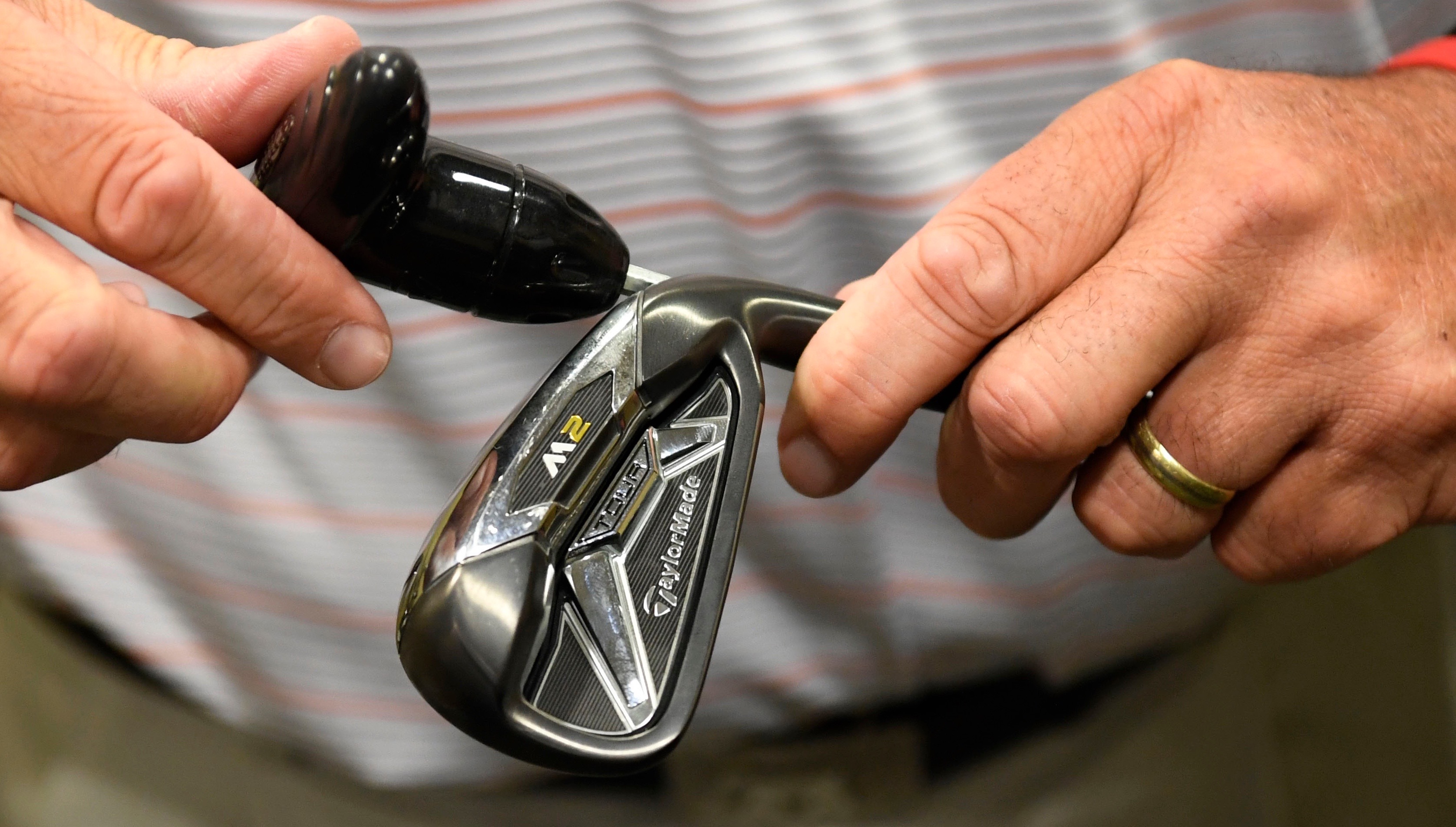
Throughout my golf career, I have been fortunate to spend time with some of the best club fitters in the world. Before I became a full-time golf instructor, I was a Tour Rep for TrackMan, which had me traveling around the U.S. and beyond to top club fitters and golf professionals. Through that experience, combined with my own teaching and fitting background, I have come to understand the many mistakes that can be made during a club fitting.
This article is not meant as a criticism toward any club fitter or golf professional. I simply want to pass on what I’ve learned to GolfWRXers and the greater golf community to do my part to make sure golfers don’t end up with a set of clubs that are a detriment to their games (and their wallets). These are the 5 biggest mistakes in club fitting.
1. Using Face Tape
Face tape has been used in club fitting for a long time. It is extremely helpful in showing us where on the club face a golf ball was struck, and it helps us understand more about why the ball is flying the way it does. This is the only way I would ever recommend using tape on the face of a golf club.
If you are a club fitter or a golf professional trying to protect your golf club during a fitting, it’s fine to put tape on the top or bottom of a wood to protect it from sole wear or potential sky marks. It’s a grave mistake to use tape on the face when you’re evaluating ball flight and/or launch monitor numbers, however, and you can see why in the example below.
With the tape on his driver club face, this golfer had about 700 more rpm of spin and 14 yards less total distance. If you are a golf professional and you want to dial in your students, DO NOT use face tape when you’re evaluating ball flight. A good alternative to face tape is Dr. Scholls foot spray. It may sound a little strange, but it will show where the ball was struck and have little to no effect on the ball flight.
2. Assuming Optimal Launch and Spin are Uniform
This is something I hear quite a bit, even from golf equipment manufacturers. Not too long ago, many in the golf industry were in agreement that the optimal launch and spin for any golfer with a driver for maximum distance was a 17-degree launch angle with 1700 rpm of spin. This might be true in a bubble, but we as humans have thousands of different combinations of swings and speeds, making this guideline almost completely useless. Take a look at some numbers for two very different golfers below: Player A and Player B. I want you to consider what you think good launch and spin should be for both.
Player A
Player B
In this scenario, I think most would assume that Player A (a low-speed player) would need significantly more spin to be optimal than Player B (a high-speed player). The rule of thumb is that the slower a golfer swings, the more spin they need to keep the ball in the air for maximum distance. Using that guideline, however, you wouldn’t optimize either golfer.
In club fittings, everything hinges on the specific needs of the golfer in front of you. The three main player inputs that determine optimal launch and spin are:
- Club Head Speed
- Attack Angle
- Desired Trajectory
In choosing a desired trajectory, a golfer has three options. They can opt for a high trajectory for maximum carry distance, a low trajectory for the most roll out (and sometimes the most total distance, depending on the conditions of the courses they play), or a combination that balances the two (carry and total). For simplicity, let’s assume both of these golfers want to optimize for the combination of carry and total. Now, let’s take a look at the optimization chart for each player below.
Player A Optimized
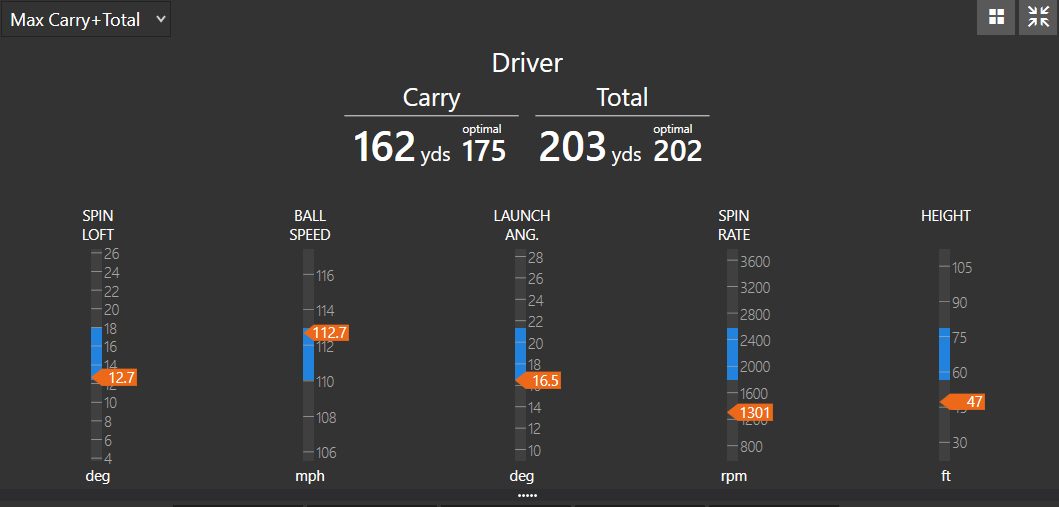 Player B Optimized
Player B Optimized
As it turns out, Player B with 135 mph of club head speed needs more spin than Player A with 76 mph of club head speed. It goes against my instincts, too, but it’s true. The reason is the Attack Angle for each player.
- Player A is hitting 5-degrees up on the ball, so he is already launching the ball into the air. For that reason, he doesn’t need as much spin for optimal distance.
- Player B is hitting 3-degrees down on the ball, so he needs more more loft and more spin to keep the ball in the air for optimal distance.
3. Only Looking at Distance Gained
This is the biggest and most common mistake I see during fittings. Both golfers and fitters are guilty of focusing on the one shot that travels 8-10 yards further during a fitting, and because it has the most distance potential, they assume that it’s the best club. I will never tell anyone that distance isn’t important, but I believe that too much emphasis has been placed on it in both driver and iron fittings.
Dispersion is huge for playability, and I suggest fitters take the time to allow golfers to hit plenty of shots in fittings. This allows them to not only optimize for distance, but also for dispersion.
Golf equipment manufacturers have given us fantastic equipment that can makes it very easy to adjust ball flight. The ability we have to tweak weighting, face angle, and lie angle can be vital to our ability to create a tighter dispersion. If you’re fitting outside, however, I encourage all fitters to go beyond the flat, perfect lies of the driving range. Have golfers hit shots from different lies and locations, and get them out on the course if you can. By testing clubs for the shots golfers are most likely to encounter during a normal round of play, you’re going to gain a much better understanding of what club will actually perform best for them.

Above are the Trackman numbers for a highly skilled junior golfer during a driver fitting. He was carrying shots about 245 yards with a total distance of 260 yards, and the ball was flying very straight. In the fitting, we were able to narrow down his best options to two drivers. With one of them, he cracked the longest shot he hit all day: 251.5 yards in the air, rolling out to almost 280 yards.
With that driver, he also recorded his fastest ball speed and best total distance by about 8 yards. When we look at the full picture, however, we will see it was not the best driver for him.
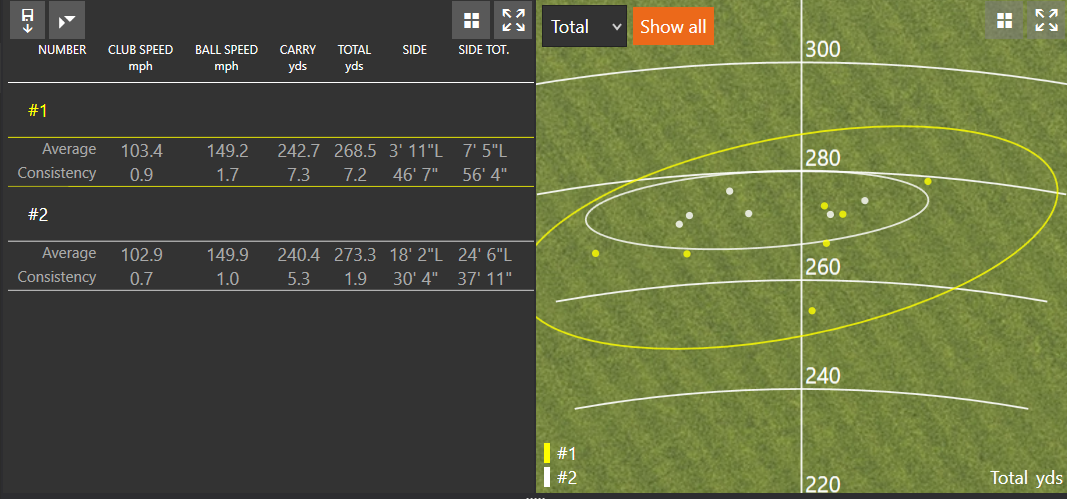
Driver #2 (white) is absolutely the most consistent in length and dispersion despite the fact that he hit Driver #1 (yellow) farther one time. Most golfers only think of their bad shots as “outliers,” when in fact they should often be discounting their very best shot with a club in the cases when the majority of their shots with the club are off-target.
4. Using a Lie Board

Lie boards are a thing of the past. There, I said it. Basing any loft or lie adjustments purely off a lie board is completely useless. On any well struck golf shot, the golf ball has already left the golf club before any significant ground and club interaction has occurred. This means the marks on the bottom of the club tells us next to nothing.
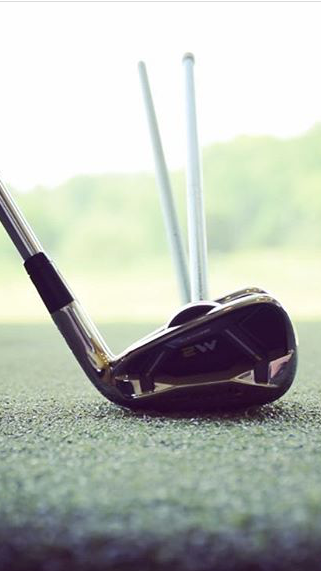
Above is a great picture from a friend of mine, Errol Helling. He’s the owner of Profectus Golf in Nashville, Tennessee. The photo shows the difference in where two golf clubs point at address: one at 3-degrees upright (pointing left) and one at 2-degrees flat (pointing right). It’s important to remember that the photo shows “static loft.” We are most interested in “dynamic loft” and the face angle at impact because that’s what effects ball flight. Just because we have an iron that is orientated a direction at setup does not mean it will point in the same direction at impact.
5. Looking at Divot Direction and Depth
Recently, this has been a frequent topic of discussion in the golf world. I hate to disagree with one of the greats of our game, Ben Hogan, but the secret is not in the dirt. I can’t say that Hogan was wrong, as his thoughts on the golf swing worked very well for him, but we now know that divot direction and divot depth tell us very little about ball flight. You can hit any kind of golf shot with every kind of divot, so why assume that the divot is going to tell us anything valuable?
Below are some pictures of shots I hit on the range. The divot direction is indicated by the alignment stick (on the left in each photo) that travels directly through the divot. The target line is the alignment stick on the right side of the picture. As you can see, the divots had no correlation to direction or curvature.
Shot #1
Shot #2
Shot #3
Shot #4
If you are trying to determine swing faults or fitting issues by looking at divots, you will be chasing an answer that does not exist. Keep your focus on impact location, face angle, club path, and angle of attack, and you’ll be on your way to better fittings.
- LIKE509
- LEGIT81
- WOW23
- LOL16
- IDHT13
- FLOP12
- OB2
- SHANK98
Opinion & Analysis
The Wedge Guy: What really makes a wedge work? Part 1

Of all the clubs in our bags, wedges are almost always the simplest in construction and, therefore, the easiest to analyze what might make one work differently from another if you know what to look for.
Wedges are a lot less mysterious than drivers, of course, as the major brands are working with a lot of “pixie dust” inside these modern marvels. That’s carrying over more to irons now, with so many new models featuring internal multi-material technologies, and almost all of them having a “badge” or insert in the back to allow more complex graphics while hiding the actual distribution of mass.
But when it comes to wedges, most on the market today are still single pieces of molded steel, either cast or forged into that shape. So, if you look closely at where the mass is distributed, it’s pretty clear how that wedge is going to perform.
To start, because of their wider soles, the majority of the mass of almost any wedge is along the bottom third of the clubhead. So, the best wedge shots are always those hit between the 2nd and 5th grooves so that more mass is directly behind that impact. Elite tour professionals practice incessantly to learn to do that consistently, wearing out a spot about the size of a penny right there. If impact moves higher than that, the face is dramatically thinner, so smash factor is compromised significantly, which reduces the overall distance the ball will fly.
Every one of us, tour players included, knows that maddening shot that we feel a bit high on the face and it doesn’t go anywhere, it’s not your fault.
If your wedges show a wear pattern the size of a silver dollar, and centered above the 3rd or 4th groove, you are not getting anywhere near the same performance from shot to shot. Robot testing proves impact even two to three grooves higher in the face can cause distance loss of up to 35 to 55 feet with modern ‘tour design’ wedges.
In addition, as impact moves above the center of mass, the golf club principle of gear effect causes the ball to fly higher with less spin. Think of modern drivers for a minute. The “holy grail” of driving is high launch and low spin, and the driver engineers are pulling out all stops to get the mass as low in the clubhead as possible to optimize this combination.
Where is all the mass in your wedges? Low. So, disregarding the higher lofts, wedges “want” to launch the ball high with low spin – exactly the opposite of what good wedge play requires penetrating ball flight with high spin.
While almost all major brand wedges have begun putting a tiny bit more thickness in the top portion of the clubhead, conventional and modern ‘tour design’ wedges perform pretty much like they always have. Elite players learn to hit those crisp, spinny penetrating wedge shots by spending lots of practice time learning to consistently make contact low in the face.
So, what about grooves and face texture?
Grooves on any club can only do so much, and no one has any material advantage here. The USGA tightly defines what we manufacturers can do with grooves and face texture, and modern manufacturing techniques allow all of us to push those limits ever closer. And we all do. End of story.
Then there’s the topic of bounce and grinds, the most complex and confusing part of the wedge formula. Many top brands offer a complex array of sole configurations, all of them admittedly specialized to a particular kind of lie or turf conditions, and/or a particular divot pattern.
But if you don’t play the same turf all the time, and make the same size divot on every swing, how would you ever figure this out?
The only way is to take any wedge you are considering and play it a few rounds, hitting all the shots you face and observing the results. There’s simply no other way.
So, hopefully this will inspire a lively conversation in our comments section, and I’ll chime in to answer any questions you might have.
And next week, I’ll dive into the rest of the wedge formula. Yes, shafts, grips and specifications are essential, too.
- LIKE7
- LEGIT1
- WOW0
- LOL0
- IDHT0
- FLOP0
- OB0
- SHANK0
Golf's Perfect Imperfections
Golf’s Perfect Imperfections: Amazing Session with Performance Coach Savannah Meyer-Clement

In this week’s episode, we spent some time with performance coach Savannah Meyer-Clement who provides many useful insights that you’ll be able to implement on the golf course.
- LIKE0
- LEGIT0
- WOW0
- LOL0
- IDHT0
- FLOP0
- OB0
- SHANK0
19th Hole
Vincenzi’s 2024 RBC Heritage betting preview: Patrick Cantlay ready to get back inside winner’s circle

Just a two-hour drive from Augusta National, the PGA TOUR heads to Harbour Town Golf Links in Hilton Head Island, S.C. Hilton Head Island is a golfer’s paradise and Harbour Town is one of the most beautiful and scenic courses on the PGA TOUR.
Harbour Town Golf Links is a par-71 that measures 7,121 yards and features Bermuda grass greens. A Pete Dye design, the course is heavily tree lined and features small greens and many dog legs, protecting it from “bomb-and-gauge” type golfers.
The field is loaded this week with 69 golfers with no cut. Last year was quite possibly the best field in RBC Heritage history and the event this week is yet another designated event, meaning there is a $20 million prize pool.
Most of the big names on the PGA Tour will be in attendance this week with the exceptions of Hideki Matsuyama and Viktor Hovland. Additionally, Webb Simpson, Shane Lowry, Gary Woodland and Kevin Kisner have been granted sponsors exemptions.
Past Winners at Harbour Town
- 2023: Matt Fitzpatrick (-17)
- 2022: Jordan Spieth (-13)
- 2021: Stewart Cink (-19)
- 2020: Webb Simpson (-22)
- 2019: CT Pan (-12)
- 2018: Sotoshi Kodaira (-12)
- 2017: Wesley Bryan (-13)
- 2016: Branden Grace (-9)
- 2015: Jim Furyk (-18)
In this article and going forward, I’ll be using the Rabbit Hole by Betsperts Golf data engine to develop my custom model. If you want to build your own model or check out all of the detailed stats, you can sign up using promo code: MATTVIN for 25% off any subscription package (yearly is best value).
Key Stats For Harbour Town
Let’s take a look at key metrics for Harbour Town Golf Links to determine which golfers boast top marks in each category over their past 24 rounds.
Strokes Gained: Approach
Strokes Gained: Approach is exceedingly important this week. The greens at Harbour Town are about half the size of PGA TOUR average and feature the second-smallest greens on the tour. Typical of a Pete Dye design, golfers will pay the price for missed greens.
Total SG: Approach Over Past 24 Rounds
- Scottie Scheffler (+1.27)
- Tom Hoge (+1.27)
- Corey Conners (+1.16)
- Austin Eckroat (+0.95)
- Cameron Young (+0.93)
Good Drive %
The fairways at Harbour Town are tree lined and feature many dog legs. Bombers tend to struggle at the course because it forces layups and doesn’t allow long drivers to overpower it. Accuracy is far more important than power.
Good Drive % Over Past 24 Rounds
- Brice Garnett (88.8%)
- Shane Lowry (+87.2%)
- Akshay Bhatia (+86.0%)
- Si Woo Kim (+85.8%)
- Sepp Straka (+85.1%)
Strokes Gained: Total at Pete Dye Designs
Pete Dye specialists tend to play very well at Harbour Town. Si Woo Kim, Matt Kuchar, Jim Furyk and Webb Simpson are all Pete Dye specialists who have had great success here. It is likely we see some more specialists near the top of the leaderboard this week.
SG: TOT Pete Dye per round over past 36 rounds:
- Xander Schauffele (+2.27)
- Scottie Scheffler (+2.24)
- Ludvig Aberg (+2.11)
- Brian Harman (+1.89)
- Sungjae Im (+1.58)
4. Strokes Gained: Short Game (Bermuda)
Strokes Gained: Short Game factors in both around the green and putting. With many green-side bunkers and tricky green complexes, both statistics will be important. Past winners — such as Jim Furyk, Wes Bryan and Webb Simpson — highlight how crucial the short game skill set is around Harbour Town.
SG: SG Over Past 24 Rounds
- Jordan Spieth (+1.11)
- Taylor Moore (+1.02)
- Wyndham Clark (+0.98)
- Mackenzie Hughes (+0.86)
- Andrew Putnam (+0.83)
5. Greens in Regulation %
The recipe for success at Harbour Town Golf Links is hitting fairways and greens. Missing either will prove to be consequential — golfers must be in total control of the ball to win.
Greens in Regulation % over past 24 rounds:
- Brice Garnett (+75.0%)
- Scottie Scheffler (+69.9%)
- Corey Conners (+69.0%)
- Shane Lowry (+68.3%)
- Patrick Rodgers (+67.6%)
6. Course History
Harbour Town is a course where players who have strong past results at the course always tend to pop up.
Course History over past 24 rounds:
- Patrick Cantlay (+2.34)
- Cam Davis (+2.05)
- J.T. Poston (+1.69)
- Justin Rose (+1.68)
- Tommy Fleetwood (+1.59)
The RBC Heritage Model Rankings
Below, I’ve compiled overall model rankings using a combination of the five key statistical categories previously discussed — SG: Approach (24%), Good Drives (20%), SG: SG (14%), SG: Pete Dye (14%), GIR (14%), and Course History (14%)
- Shane Lowry
- Russell Henley
- Scottie Scheffler
- Xander Schauffele
- Corey Conners
- Wyndham Clark
- Christiaan Bezuidenhout
- Matt Fitzpatrick
- Cameron Young
- Ludvig Aberg
2024 RBC Heritage Picks
Patrick Cantlay +2000 (FanDuel)
With the exception of Scottie Scheffler, the PGA Tour has yet to have any of their star players show peak form during the 2024 season. Last week, Patrick Cantlay, who I believe is a top-5 players on the PGA Tour, took one step closer to regaining the form that’s helped him win eight events on Tour since 2017.
Cantlay limped into the Masters in poor form, but figured it out at Augusta National, finishing in a tie for 20th and ranking 17th for the week in Strokes Gained: Ball Striking. The former FedEx Cup champion will now head to one of his favorite golf courses in Harbour Town, where he’s had immaculate results over the years. In his six trips to the course, he’s only finished worse than 7th one time. The other finishes include three third places (2017, 2019, 2023) and one runner-up finish (2022). In his past 36 rounds at Harbour Town, Cantlay ranks 1st in Strokes Gained: Total per round at the course by a wide margin (+2.36).
Cantlay is winless since the 2022 BMW Championship, which is far too long for a player of his caliber. With signs pointing to the 32-year-old returning to form, a “signature event” at Harbour Town is just what he needs to get back on the winning track.
Tommy Fleetwood +3000 (FanDuel)
I truly believe Tommy Fleetwood will figure out a way to win on American soil in 2024. It’s certainly been a bugaboo for him throughout his career, but he is simply too talented to go another season without winning a PGA Tour event.
At last week’s Masters Tournament, Fleetwood made a Sunday charge and ended up finishing T3 in the event, which was his best ever finish at The Masters. For the week, the Englishman ranked 8th in the field in Strokes Gained: Approach, 10th in Strokes Gained: Ball Striking and 16th in Strokes Gained: Putting.
Harbour Town is a perfect layout for Fleetwood, and he’s had relative success at this Pete Dye design in the past. In his four trips to the course, he’s finished inside of the top 25 three times, with his best finish, T10, coming in 2022. The course is pretty short and can’t be overpowered, which gives an advantage to more accurate players such as Fleetwood. Tommy ranks 8th in the field in Good Drive % and should be able to plot his way along this golf course.
The win is coming for Tommy lad. I believe there’s a chance this treasure of a golf course may be the perfect one for him to finally break through on Tour.
Cameron Young +3300 (FanDuel)
Cameron Young had a solid Masters Tournament last week, which is exactly what I’m looking for in players who I anticipate playing well this week at the RBC Heritage. He finished in a tie for 9th, but never felt the pressure of contending in the event. For the week, Young ranked 6th in Strokes Gained: Off the Tee and 6th in Strokes Gained: Ball Striking.
Despite being one of the longest players off the tee on the PGA Tour, Young has actually played some really good golf on shorter tracks. He finished T3 at Harbour Town in 2023 and ranks 20th in the field in Good Drive% and 16th in Greens in Regulation in his past 24 rounds. He also has strong finishes at other shorter courses that can take driver out of a players hand such as Copperhead and PGA National.
Young is simply one of the best players on the PGA Tour in 2024, and I strongly believe has what it takes to win a PGA Tour event in the very near future.
Corey Conners +5500 (FanDuel)
Corey Conners has had a disappointing year thus far on the PGA Tour, but absolutely loves Harbour Town.
At last week’s Masters Tournament, the Canadian finished T30 but ranked 20th in the field in Strokes Gained: Approach. In his past 24 rounds, Conners ranks 3rd in the field in Strokes Gained: Approach, 3rd in Greens in Regulation % and 24th in Good Drive %.
In Conners’ last four trips to Harbour Town, his worst finish was T31, last season. He finished T4 in 2021, T12 in 2022 and ranks 8th in Strokes Gained: Total at the course over his past 36 rounds.
Conners hasn’t been contending, but his recent finishes have been encouraging as he has finished in the top-25 in each of his past three starts prior to The Masters, including an impressive T13 at The PLAYERS. His recent improvement in ball striking as well as his suitability for Harbour Town makes Conners a high upside bet this week.
Shane Lowry (+7500) (FanDuel)
When these odds were posted after Lowry was announced in the field, I have to admit I was pretty stunned. Despite not offering much win equity on the PGA Tour over the last handful of years, Shane Lowry is still a top caliber player who has the ability to rise to the top of a signature event.
Lowry struggled to score at The Masters last week, but he actually hit the ball really well. The Irishman ranked 1st for Strokes Gained: Approach on the week and 7th in Strokes Gained: Ball Striking. As usual, it was the putter that let him down, as he ranked 60th in the field in Strokes Gained: Putting.
Harbour Town is most definitely one of Lowry’s favorite courses on the PGA Tour. In his six starts there, he’s finished in the top 10 three times, including third twice. Lowry is sensational at Pete Dye designs and ranks 7th in Strokes Gained: Total in his past 36 rounds on Dye tracks.
Lowry is perfect for Harbour Town. In his past 24 rounds, he ranks 5th in Strokes Gained: Approach, 2nd in Good Drive% and 5th in Green in Regulation %. If he figures it out on the greens, Shane could have his first win in America since 2015.
Lucas Glover +12000 (FanDuel)
This is one of my weekly “bet the number” plays as I strongly believe the odds are just too long for a player of Glover’s caliber. The odds have been too long on Glover for a few weeks now, but this is the first event that I can get behind the veteran being able to actually contend at.
Glover is quietly playing good golf and returning to the form he had after the understandable regression after his two massive victories at the end of 2023. He finished T20 at The Masters, which was his best ever finish at Augusta National. For the week, Lucas ranked 18th for Strokes Gained: Approach and 20th in Strokes Gained: Ball Striking.
Over his past 24 rounds, Glover ranks 9th in Strokes Gained: Approach and 13th in Good Drive %. Harbour Town is a short course that the 44-year-old will be able to keep up with the top players on Tour off the tee. He’s played the course more than 20 times, with mixed results. His best finishes at Harbour Town include a T7 in 2008, but recently has a finish of T21 in 2020.
Glover has proven he can contend with the stars of the Tour on any given week, and this number is flat out disrespectful.
- LIKE30
- LEGIT5
- WOW2
- LOL1
- IDHT1
- FLOP2
- OB0
- SHANK2
-

 19th Hole1 week ago
19th Hole1 week agoDave Portnoy places monstrous outright bet for the 2024 Masters
-

 19th Hole2 weeks ago
19th Hole2 weeks agoThings got heated at the Houston Open between Tony Finau and Alejandro Tosti. Here’s why
-

 19th Hole1 week ago
19th Hole1 week agoTiger Woods arrives at 2024 Masters equipped with a putter that may surprise you
-

 19th Hole2 weeks ago
19th Hole2 weeks agoReport: Tiger Woods has ‘eliminated sex’ in preparation for the 2024 Masters
-

 19th Hole4 days ago
19th Hole4 days agoTwo star names reportedly blanked Jon Rahm all week at the Masters
-

 19th Hole3 days ago
19th Hole3 days agoNeal Shipley presser ends in awkward fashion after reporter claims Tiger handed him note on 8th fairway
-

 19th Hole2 days ago
19th Hole2 days agoReport: LIV Golf identifies latest star name they hope to sign to breakaway tour
-

 19th Hole2 weeks ago
19th Hole2 weeks agoAddiction, spinal fusion, and scam artists – Everything Anthony Kim revealed in candid interview with David Feherty

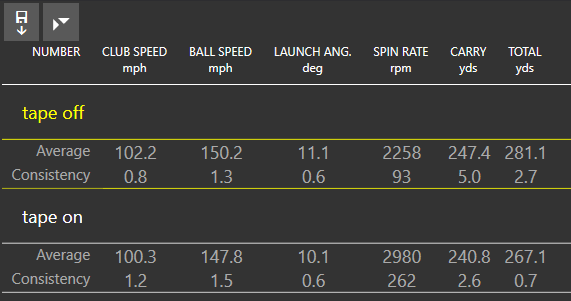
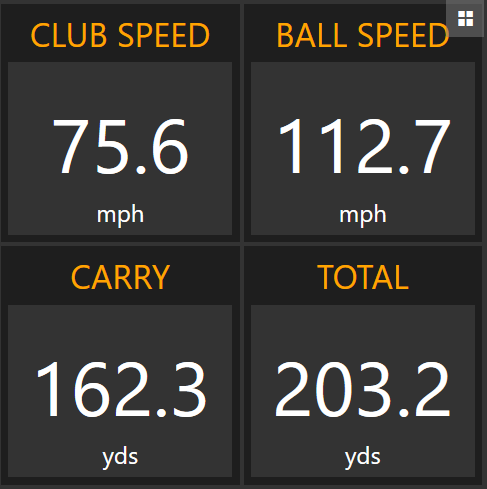
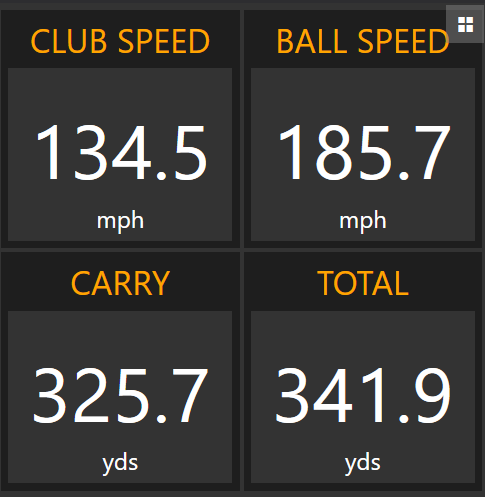
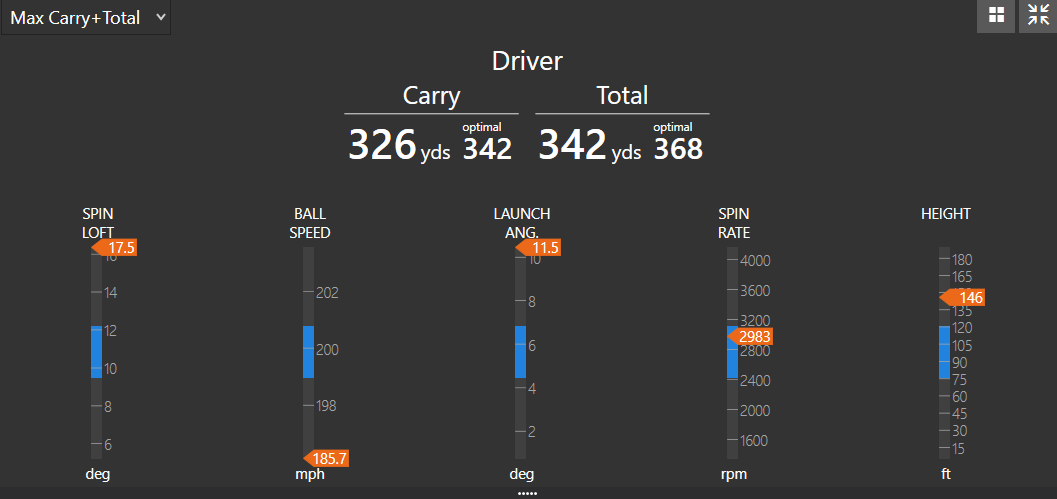
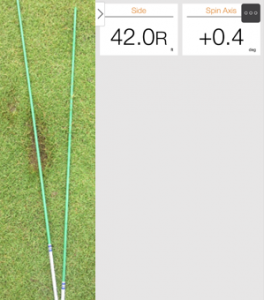
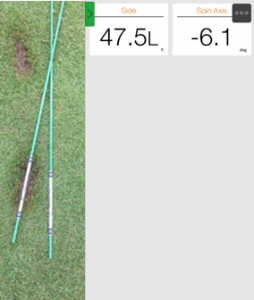
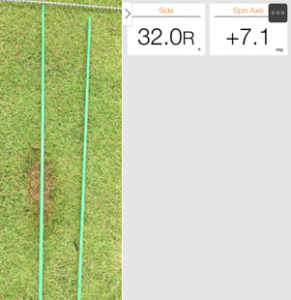
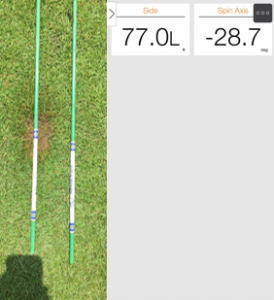















when_is_a_wrench_not_a_wrench
Aug 27, 2017 at 3:29 pm
Did anyone notice the main photo shows someone pretending to insert a wrench into a M2 Tour Iron head?
Beta
Aug 27, 2017 at 8:22 pm
Yeah? So? It’s a Fitting head. They have one of those last year lol so he’s not pretending
SoonerSlim
Aug 27, 2017 at 11:02 am
Hunter, very interesting article, but for me it did not go far enough because I’ve never seen and do not understand what the side and spin axis numbers you offer for the divot pictures represent. Unfortunately, you did not go far enough and offer an explanation for them. For example, what’s the difference between + and – spin axis? What does the side number mean? Great article except for the last part.
thanks, SoonerSlim
Hunter Brown
Aug 27, 2017 at 1:28 pm
Sooner, thanks for reading and giving your feedback. You are probably right I should have included some definitions about Spin Axis and Side. Coming from that world sometimes I forget not everyone knows the terminology. Spin axis represents which way the golf ball is curving so if positive the ball is curving to the right and if negative it is curving to the left. Side represents how far off of the target line the ball landed. Hope this helps! If you want to learn more about TrackMan Definitions visit the trackman blog.
SoonerSlim
Aug 27, 2017 at 9:34 pm
Thanks, Hunter
Never have seen or used a trackman, too old school I guess.
S
Michael
Aug 26, 2017 at 11:10 am
What if your line is straight on the club face but out towards the toe?
Beta
Aug 27, 2017 at 8:24 pm
Stand closer? Juuuuust kidding.
Jeffrey
Aug 26, 2017 at 4:14 am
Heres an idea. Why don’t we go out with our golf clubs and hit the ball and have some fun and forget about all this numbers/fitting/trackman/drills/etc BS. If you play good, great. If you play bad, there is always next time.
emb
Aug 28, 2017 at 2:49 pm
ya who cares about shooting your best possible scores, might as well buy your equipment from walmart and play top flites right
Stevegp
Aug 25, 2017 at 11:50 pm
Enjoyed the article and subsequent discussion. Getting fitted and hitting a club outdoors always seemed much different–and better–than hitting into a net while indoors.
Guia
Aug 25, 2017 at 6:38 pm
I am lost! Seems most of what has been accepted in the past is wrong, or misused.
Marooned
Aug 25, 2017 at 6:04 pm
No idea of how the “fitting culture” are in the states. But here in Europe (Sweden) most of this is common sense except your point of the lieboard.
It is such a great and easy tool and a must have. One thing about lie though that I feel is that many people just hit a couple of shots with an 7-iron and that sets the marknfor the lieangle throughout the set.
A longer iron such as an 4-iron often needs a more upright lieangle then a 9-iron for example.
The majority of people a do an lietest with hitting a 4, 7 and 9-iron are hitting it more on the toe with a 4-iron compared to the 9-iron.
Bert
Aug 26, 2017 at 6:23 pm
Good thoughts – I’ve always just hit a 6 or 7 off the lie board. I’ve measured all my lofts and lies but tomorrow I’ll hit the long irons and short irons off the board and note the results.
Bob
Aug 25, 2017 at 4:22 pm
Gee, it seems like there is a lot of disagreement about proper club fitting technique. I have gotten advice about clubs on several occasions but never really had a fitting. One reason is that I have heard so much disagreement about how it should be done and am not aware of any standards or any acknowledged experts (e.g. Ping vs Callaway, etc.). I suppose the best shot might be to work with a pro, who also provides instruction and who will be around to provide guidance after new clubs are purchased or current clubs are adjusted for length, loft, lie, swing weight, grip, etc. The big question is why spend a lot of money, if you don’t know what you are buying?
Rors
Aug 25, 2017 at 4:15 pm
Steve Elkington has a video on youtube about dynamic fitting for irons… He marks a ball with a sharpie and that mark imprints on your club… I tried it and its the best…
Ben Jones
Aug 25, 2017 at 3:24 pm
Good Lord! How did we survive before technology. Now, I can get some really great clubs perfectly fit for me on that day for $4,000 or more, but if my swing ain’t worth crap and I can’t putt, what good is all this?
Lorne
Aug 25, 2017 at 3:19 pm
Clubs have a ‘static’ lie and a ‘dynamic’ lie which is a function of shaft tip ‘droop’. The position of the hands and club butt end changes through release and impact, which will affect the shaft lie.
The weight and shape of the clubhead will affect dynamic lie because the clubhead CofGs vary the droop characteristics of the shaft. Shaft specs influences dynamic loft as does downswing plane and clubhead speed which can vary as the golfer fatigues during the round.
So we have how many variables for dynamic lie? 6? 7? 8? 9? More? Less?
A good fitter can measure several of these lie factors but must also use intuitive knowledge to match the golfer to the optimal shaft and clubhead, and grip too. Good luck.
Tata
Aug 25, 2017 at 2:41 pm
In regards to #3.
I can guarantee you that 9 out of 10 amateurs who can’t hit their driver past 200 yards is solely focused on that aspect. They don’t care about anything else, because they all believe that once their distance is sorted out, that they can then learn to control their ball flight. Which is deadly absolutely true.
Dave
Aug 25, 2017 at 2:28 pm
Very interested in this article, yes I understand how you can determine lie angle by using a marker pen on the ball and Callaway use this method a lot with there fitting. We use the marker on the ball when fitting outdoors, but indoors with launch monitor the Marker ruins the white screen we have for our projector and leaves black marks on the screen. Would be interested to know if there are any other ways of determining a correct lie angle without the option of a lie board or marker pen on a ball???
Noodler
Aug 25, 2017 at 8:26 pm
I temporarily hang a black tarp/net in front of the screen to prevent the marker from being left on the white screen.
Hunter Brown
Aug 25, 2017 at 8:28 pm
Dave I would suggest always keeping your focus on flight and dispersion. From there if you need to make adjustments to lie angle you can but it shouldn’t be the first thing we go to
Noodler
Aug 26, 2017 at 9:21 am
Sorry Hunter, but I believe this is misguided advice. Golfers should be fit to their physique, strength, flexibility, etc., not to their swing mechanics. Swing mechanics will change over time (even day to day). Using lie angle adjustment to compensate for swing flaws is not the right approach. Trying to use club fitting to compensate for swing flaws is the 6th biggest mistake in club fitting.
Hunter Brown
Aug 27, 2017 at 9:19 am
Why can’t it be both? I never said you shouldn’t fit for the human being in front of you. Too much mutual exclusivity in your train of thought.
TexasSnowman
Aug 25, 2017 at 11:31 am
Agree with the comments on hitting indoors; I never feel like I hit my best shots. Club Fitting needs some type of standards or certification for competence. Even if you pay for a “tour level” fitting, you really have no idea if the fitter knows what he is doing… I’m not saying take all the ‘art’ out of the process, but it’s really the wild west out there in terms of quality.
Bobalu
Aug 25, 2017 at 10:50 am
Hunter- Great points! Fittings need to be done with a competent fitter with Trackman on the range. Period. Good luck finding this.
ADIDAG
Aug 25, 2017 at 10:36 am
Looks like to get optimum anything players need to focus on roll
Nack Jicklaus
Aug 25, 2017 at 9:59 am
You can get a good idea if your lie angle is correct by drawing a straight line around the circumference of a ball with a sharpie. Sit the ball on the ground with the line pointing straight up and down and with the line also pointing directly where you intend to hit the ball (just like people who line up putts with a line drawn on their ball). Now hit your shot and some of the sharpie line will stick to the face of your club. If the line is perfectly perpendicular to the grooves on your club, then your lie angle is correct. If not, it needs changing one way or the other.
Steve
Aug 25, 2017 at 12:47 pm
100% spot on. Well done.
Hunter Brown
Aug 25, 2017 at 6:26 pm
I agree with this however if the line is perpendicular and the golf ball is going as straight as possible for that player then why should we care. My point is we should always focus on ball flight not the extraneous details that sometimes do or do not matter
Sam
Aug 25, 2017 at 9:56 am
Lie angle has been a big question mark for me. So what is a better way to determine this other than a lie board? Almost, every ‘fitter’ or club seller I’ve seen, used a lie board, with one exception at DSGoods .. one employee used impact tape and adjusted lie angle until center contact was made .. very strange to me.
OGWC
Aug 25, 2017 at 10:05 am
Use a dry erase marker and put a vertical line on the ball. This is a simple and effective way to read the lie. When you hit the ball, the line gets transferred to the club face. A straight line up and down on the iron face means the lie is good.
Hunter Brown
Aug 25, 2017 at 6:30 pm
Dry erase is a decent solution however I would suggest just to focus on ball flight and dispersion. I would never care if a sharpie isn’t perpendicular or a piece of tape on the bottom of the face is telling me the club is “upright”. If a player is getting good results then that’s all that matters on course.
Noodler
Aug 25, 2017 at 8:30 pm
This only makes sense if you adhere to the idea that you should use lie angle adjustment to change ball flight. Many other factors could be impacting ball flight. Trying to fix ball flight due to other swing flaws via lie angle adjustments is a fool’s folly (IMHO).
KV
Aug 25, 2017 at 9:49 am
Help me understand your thoughts on lie boards. You talk about dynamic loft but criticize the lie board. It’s not called a “loft” board it’s a lie board. How else do we adjust lie without knowing where and how the club sole contacts the ground? Get everything else right and have the wrong lie adjustment and you’ve wasted a lot of time.
Hunter Brown
Aug 25, 2017 at 6:32 pm
Hey KV thanks for reading and your thoughts. I would always start with ball flight and dispersion if this is something you can measure or a pro near you can. Lie board’s tell us nothing about the shot that was just hit so I don’t know why we should care.
JN
Aug 25, 2017 at 7:21 pm
Although there are better ways to examine dynamic lie over the lie board (e.g. HMT), it definitely is relevant. Regardless of someone’s ball flight, getting them fit so that the dynamic lie is near 0 will improve their consistency and quality of impact. It’s just hard to consistently hit the center of the face when the toe or heel of the club dig into the ground early. The small change in face angle due to a lie change can be always be addressed after the fact. If you need help with a slice, just closing the face during setup with a proper lie angle is better than making impact toe up and getting the face closed from that.
Justin
Aug 25, 2017 at 8:58 am
You say not to use a lie board…not to look at divots…. How do you determine proper lie? Cannot do by shot pattern into a net. If you are going to give criticism, provide a solution as well.
Jon
Aug 25, 2017 at 9:19 am
I couldn’t agree more, Justin. How am I supposed to determine the proper lie angle without the aid of a lie board? I am new at this and am trying to learn how to make the proper adjustments on my own.
Nick
Aug 25, 2017 at 9:48 am
Trackman
Nick W
Aug 25, 2017 at 11:15 am
Trackman does not tell lie angles, trackman spits out information regarding ball flight. It does not care if its 10* upright or 2* flat.
Matt
Aug 25, 2017 at 11:15 am
Take some chalk or marker that will transfer when struck. Draw a straight line on the ball. Put the ball on the ground with the line vertical where you will strike it. Hit the ball. Look at the club face… you’ll have a good idea whether your club is too flat or upright.
Hunter Brown
Aug 25, 2017 at 6:35 pm
Hey Justin thanks for the input. I would always prefer to do a fitting outside if possible. Even on the course sometimes. If not possible and you are only hitting into a net then hopefully you have availability of TrackMan. If not I would suggest trying to find one. My point of lie boards and divots is that they have no correlation to what the ball is actually doing so why should we care? TrackMan does not specifically spit out a number called lie angle however it does tell us Face Angle at impact and Dynamic loft which would be a result of lie angle. If those numbers are good then you should be ok.
Jon
Aug 25, 2017 at 8:54 am
If lie boards are horrid, how am I supposed to determine what lie angle is best suited for me? I am looking for a little more education on this subject as I am just getting started with trying to assemble and adjust my own clubs. Thank you in advance for any and all advice.
Greg
Aug 25, 2017 at 10:15 am
Draw a vertical line on the ball with a sharpie. Examine the line it leaves on the club face. Adjust until vertical. Google it or search the forums.
Hunter Brown
Aug 25, 2017 at 6:47 pm
Hey Jon thanks for reading and taking the time to respond. I would rather the focus to be on ball flight and dispersion in a fitting. Also loft and lie adjustments can sometimes be a band aid for a bullet hole as it doesn’t address the root cause of the issue. Not always the case if you are really trying to dial things in with little tweaks but I get scared when people are fit for major lie adjustments. Often I think it actually makes the problem worse. I would work from the ball flight backwards. If thats good then why adjust? If it isn’t then you can make some adjustments of the loft lie but as I said earlier be cautious
Loz
Aug 26, 2017 at 3:44 am
So as I’m 6′ 4″ provided I can hit an off the shelf club ok I shouldn’t worry about custom fitting? On the Ping scale I come out at 4 degrees upright and plus one inch. I know I can hit an off the shelf club well, but won’t I subconsciously be compensating in my setup and swing. I’m a 4 hcp and have pretty solid fundamentals. Surely I’m going to be catching the toe first on everything, which can’t be a good thing. What would be my start point in your fitting?
Robert Malaussena
Aug 25, 2017 at 8:52 am
Get fitted by your local PGA pro on a range.
Bert
Aug 26, 2017 at 7:08 pm
I’m not sure that’s good information. PGA Pro, good fitting? Maybe find a good PGA professional or golf instructor for lessons.
xjohnx
Aug 25, 2017 at 8:48 am
Though some of these mistakes are made only in professional, outdoor fittings, #3 is the biggest thing wrong with the golf industry as a whole. Most people getting “fit” are walking into a sporting goods store or golf shop and comparing a few drivers and looking at the “numbers” on a very one dimensional basis and in a short amount of time. #3 happens just about everywhere just about every time.
Me
Aug 25, 2017 at 8:47 am
As a fitter ….
Irons, I weigh on more ball flight, direction and consistent carry. Ideally on natural turf as opposed to a hard mat. Driver; I agree completely with the writer, then again the golfer has final say, after reviewing the data of what ball flight they “like” . There are some that prefer a lower ball flight period, its often what they feel the most comfortable with- despite the technology and Data. Sergio for example prefers a slightly lower & more boring trajectory. No everyone is like Sergio but there is a fair amount of my customers that prefer a 10 degree launch angle than a say a 12.
Even tougher to fit is older guys, who have slowly lost distance every year. Who in a subtle attempt of trying to speed up the driver head at impact, resort to lurching ahead of the ball with their hips, body and head, de-lofting the head to a negative attack angle. Rather than neutral or +1, 2, 3 degree attack angle by staying behind the ball.
good article over all.
Andy
Aug 25, 2017 at 8:39 am
I suspect many people do not feel like they are swinging 100% like they normally do with indoor fittings. I am one of those people who feel confined and I also like to have a further away target. We will look back at hitting balls 15 feet into a padded screen as a huge mistake. Hit the clubs on the range and on the course before purchasing. Not many fitters offer this.
There will come a day when we can swing some tool at a course and capture all the necessary data and the tool will identify the possible clubs to maximize our swing. The possible clubs will include past years and even various cost options. The Fitter model today is like new car salesman. I don’t feel 100% sure that their interest and my interest is fully aligned.
Me
Aug 25, 2017 at 8:52 am
Andy, that’s not unusual & normal for some. I compare the feeling you have to driving a car. When we do we focus on an object 100-150 feet ahead ( depending on car speed) as opposed to looking just over the hood and have to constantly correct steering of the automobile. In other examples some people feel like they are hitting into heavy fog when being fitted in an indoor simulator. I still do the fitting, but once things are narrowed down, take the club outdoors.
Tom F. Stickney II
Aug 25, 2017 at 8:34 am
Good points HB!
Hunter Brown
Aug 25, 2017 at 6:36 pm
Thanks Tom hope you are well!
Thus
Aug 25, 2017 at 8:21 am
Great advice, as a club fitter I recommend all other fitters and even coaches read this… lie boards are horrid and reading divots can create disastrous thoughts
Nick W
Aug 25, 2017 at 11:18 am
What would you propose for lie angle assessment if you are not using a lie board or reading divot patterns?
Loz
Aug 26, 2017 at 3:26 am
Yes I’d like to hear this too. I’m 6′ 4″ and am 4 degrees upright on the Ping scale. I currently have 2 degree up 1/2″ long Mizuno from their national UK fitting centre, yes a lie board was used. As I can hit my friends off the rack club straight, probably subconsciously compensating in my setup and swing, then I actually don’t need custom fit clubs. My natural swing is always going to hit slightly toe down and you think there’s nothing wrong with this in the long term?